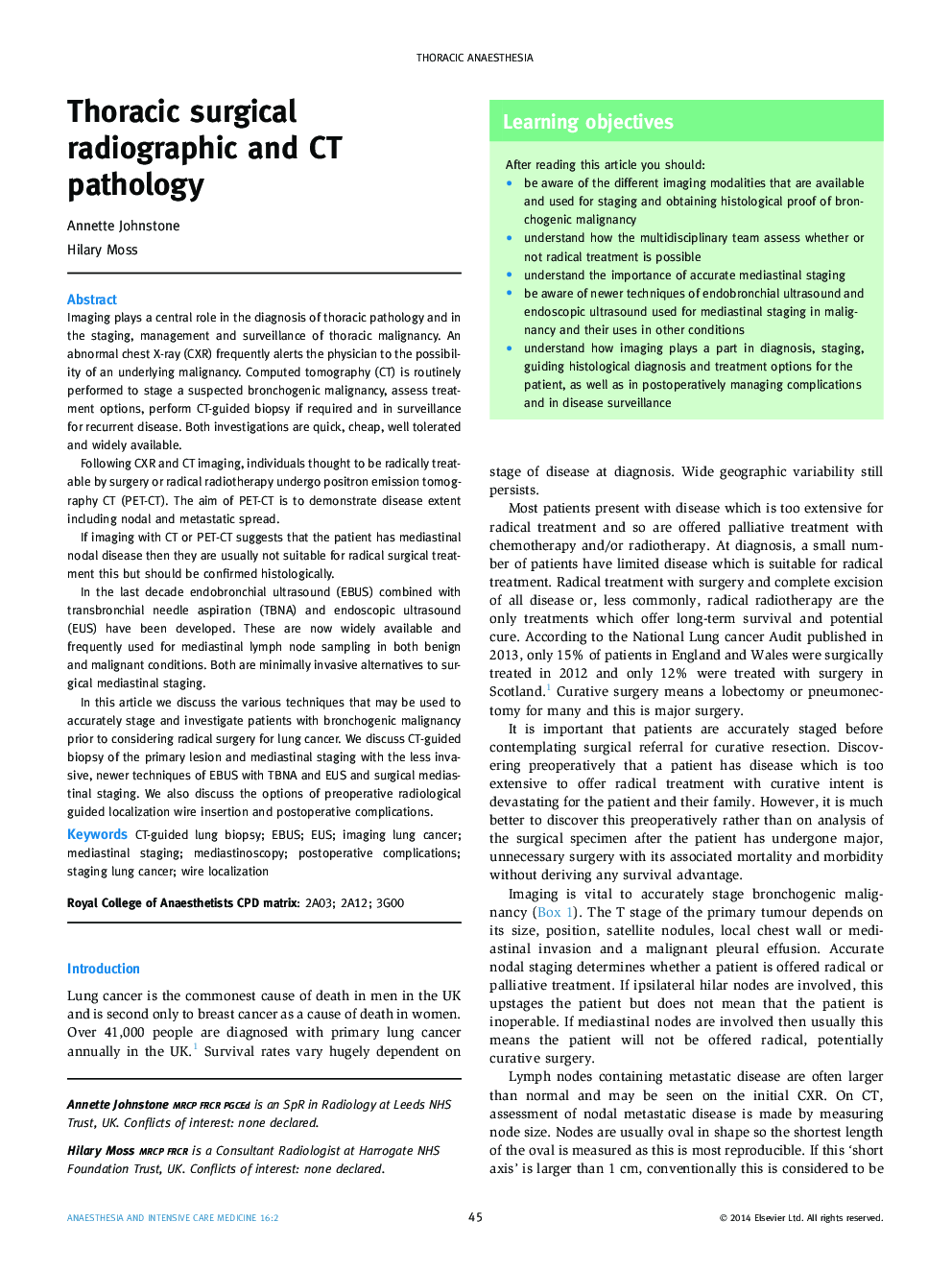| Article ID | Journal | Published Year | Pages | File Type |
|---|---|---|---|---|
| 2742241 | Anaesthesia & Intensive Care Medicine | 2015 | 9 Pages |
Imaging plays a central role in the diagnosis of thoracic pathology and in the staging, management and surveillance of thoracic malignancy. An abnormal chest X-ray (CXR) frequently alerts the physician to the possibility of an underlying malignancy. Computed tomography (CT) is routinely performed to stage a suspected bronchogenic malignancy, assess treatment options, perform CT-guided biopsy if required and in surveillance for recurrent disease. Both investigations are quick, cheap, well tolerated and widely available.Following CXR and CT imaging, individuals thought to be radically treatable by surgery or radical radiotherapy undergo positron emission tomography CT (PET-CT). The aim of PET-CT is to demonstrate disease extent including nodal and metastatic spread.If imaging with CT or PET-CT suggests that the patient has mediastinal nodal disease then they are usually not suitable for radical surgical treatment this but should be confirmed histologically.In the last decade endobronchial ultrasound (EBUS) combined with transbronchial needle aspiration (TBNA) and endoscopic ultrasound (EUS) have been developed. These are now widely available and frequently used for mediastinal lymph node sampling in both benign and malignant conditions. Both are minimally invasive alternatives to surgical mediastinal staging.In this article we discuss the various techniques that may be used to accurately stage and investigate patients with bronchogenic malignancy prior to considering radical surgery for lung cancer. We discuss CT-guided biopsy of the primary lesion and mediastinal staging with the less invasive, newer techniques of EBUS with TBNA and EUS and surgical mediastinal staging. We also discuss the options of preoperative radiological guided localization wire insertion and postoperative complications.
